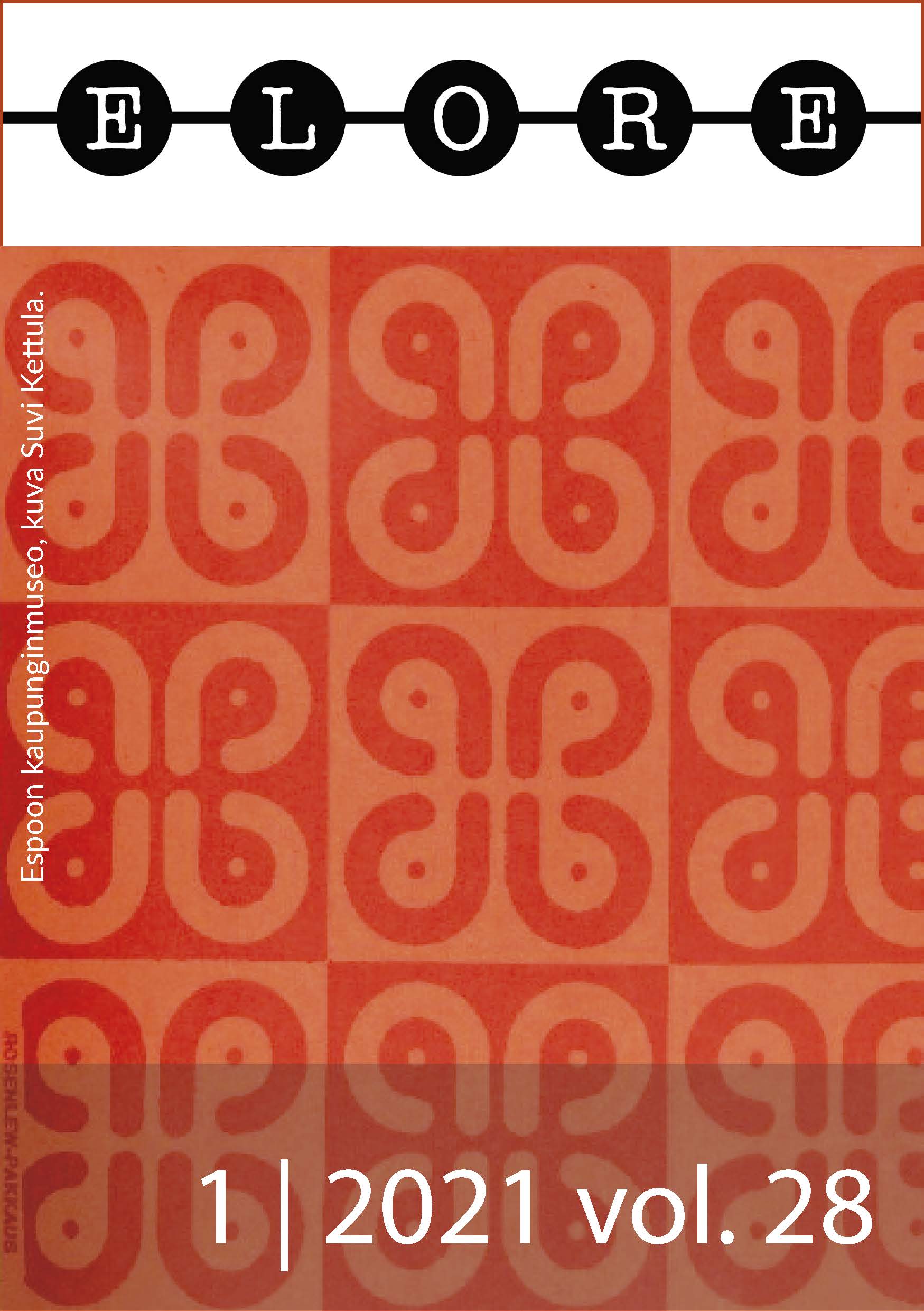The Image of Stockholm in Pre-Modern Oral Tradition in Finland, Karelia and Ingria
DOI:
https://doi.org/10.30666/elore.100593Keywords:
Tukholma, kansanrunous, suullinen kansanperinne, suullinen kertomusperinne, lastenlorut, esimoderni, ylipaikallisuus, ylirajaisuus, mielikuvatAbstract
This article analyses folkloric descriptions of Stockholm among the population of Finland and its neighbouring regions to the east and southeast which nowadays belong to the Russian Federation. As a transregional centre, Stockholm has affected the collective memory of people living relatively far away from the Swedish capital. This is the first study in which oral traditions are analysed in order to reconstruct the image of Stockholm among early modern Finnish, Karelian and Ingrian populations.
Finnish, Karelian, and Ingrian are related languages. The collected traditions that were presented in these languages consist mostly of poems, or, more accurately, songs, which were composed by utilising the Kalevala metre. Some children’s rhymes are available in more westerly areas. The poems and rhymes do not actually depict Stockholm or its inhabitants. Instead, Stockholm is presented as a distant place and as a part of the real world. The poems often connect Stockholm to products, like nuts, knives, textiles and alcoholic beverages. Often it is a question of products that were shipped from Stockholm to other areas of the Baltic Sea Region. The poetic language uses Stockholm as a synonym or attribute to something valuable or rare. There are also poems that acknowledge the position of Stockholm as an administrative centre.
The tradition maintained by the Swedish-speaking population in Finland is more diverse and Stockholm is mentioned more often in tales presented in prose. These tales also often mention merchandise. In addition, the export of Finnish goods to Stockholm is frequently mentioned. Stockholm is also depicted as a city and a place that can be visited. Occasionally, the tales also provide information on the city and its inhabitants. Even nonsensical children’s rhymes give more exact information than their counterparts in Finnish. Thanks to the common language and the greater geographic proximity, it was easier for Swedish speakers to interact with Stockholmers. The tradition presented in Finnish, Karelian, and Ingrian originates from areas which were situated further away.
However, it is the traditions of Swedish-speakers that contain more elements of othering: according to several tales, it is, for example, possible to meet odd creatures on the sea when sailing to or from Stockholm. Even the city itself was sometimes presented as a part of a supernatural sphere, as witches and Sàmi with magical abilities were said to live there. Apparently, Stockholm was so well-known among the population of the Finnish archipelagos and in the coastal areas that its image could be coloured. Most likely, such tales were not always meant to be taken seriously.

Downloads
Published
How to Cite
Issue
Section
License
The journal follows Diamond Open Access publishing model: the journal does not charge authors and published texts are immediately available on the Journal.fi service for scientific journals. By submitting an article for publication on Elore, the author agrees, as of September 2024, that the work will be published under a CC BY 4.0 licence. Under the licence, others may copy, transmit, distribute and display the copyrighted work and any modified versions of the work based on it only if they attribute the licence, the original publication (link or reference) and the author as the original author. Any modifications made must be acknowledged.
Copyright of the texts remains with the authors, and self-archiving (Green OA) of the published version is allowed. This also applies to texts published before September 2024. The Green OA publication must include Elore's publication details.
The metadata for published articles is licensed under Creative Commons CC0 1.0 Universal.





